Blog
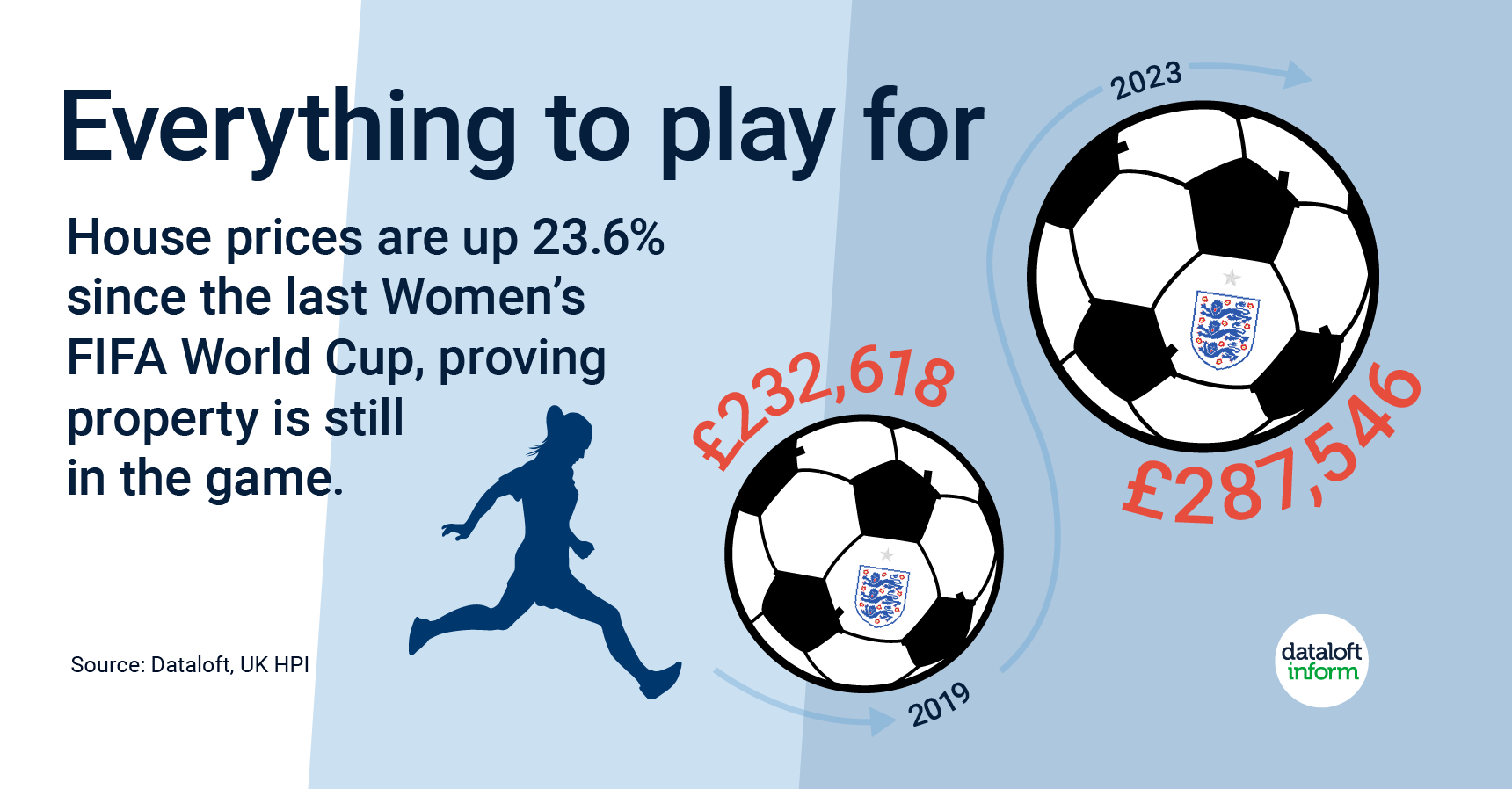
In the wake of the heartbreak witnessed in the World Cup final, the resilience and determination displayed by the Lionesses have transcended the boundaries of disappointment, inspiring a new era of sportswomen. This inspiration isn't limited to the professional stage, as the legacy of the EURO 2022 has blossomed, creating an astounding number of opportunities for women and girls to engage in grassroots football activities across England. Moreover, the ripple effects of this phenomenon extend beyond the realm of sports, influencing even the property market. Let's delve into these remarkable developments that are reshaping both the sports and the property market landscapes in England.
EURO 2022: Forging a Path for Women's Football
The EURO 2022 tournament left an indelible mark on the landscape of women's football in England. While the Lionesses may have faced disappointment in the World Cup final, their journey ignited a spark in the hearts of aspiring athletes. The legacy of EURO 2022 has been transformational, with the creation of more than 416,000 new opportunities for women and girls to participate in grassroots football. Schools, clubs, and communities have become vibrant hubs for nurturing talent and fostering the growth of women's football.
In a country where football holds a special place in the hearts of many, this surge of interest in women's football is more than a sporting trend—it's a cultural shift. The EURO 2022 legacy is igniting dreams and breaking down barriers, as young girls witness the accomplishments of the Lionesses and envision themselves making strides in the world of sports.
A Surprising Synergy: Women's Football and Property Prices
Beyond the sports arena, an unexpected connection has emerged between women's football and the real estate market. In the aftermath of the last Women's FIFA World Cup in 2019, property prices in the UK experienced a notable rise. Even in the face of recent market softening, the average house price has surged by an impressive 23.6%. This growth can be partially attributed to the cultural impact of women's football and the resurgence of interest in sports, igniting community engagement and fostering a sense of unity. The average house Price in Crawley for 2019 was £288,582 where as the average house price for August 2023 is £349,178.
Football, particularly in the UK, transcends mere entertainment—it's a collective experience that binds communities together. As spectators and participants come together to celebrate the beautiful game, they also contribute to the economic ecosystem, breathing life into local businesses and driving demand in the housing market.
The Enchanting Allure of Football
With an estimated 13.5 million individuals engaging in football in some capacity, it's evident that the sport's allure knows no bounds. From casual kickabouts in local parks to organized matches on community playing fields, football resonates with people of all ages and backgrounds. The sheer number of community playing fields in Great Britain—over 21,600, sprawling across more than 54,000 hectares—reflects the profound influence that football has on the nation's social fabric.
The Lionesses' journey is a testament to the potential of women's football to galvanize communities and inspire generations. As young girls lace up their boots and step onto the pitch, they're not just playing a game—they're embracing empowerment, teamwork, and the spirit of competition. These values transcend sports and become guiding principles in all facets of life.
In conclusion, the Lionesses' journey from heartbreak to inspiration showcases the profound impact of women's football on society. The EURO 2022 legacy has opened doors for countless aspiring sportswomen, while also breathing life into local communities and the property market. Football's unifying power continues to shape the cultural, economic, and social landscapes of the United Kingdom, fostering a sense of togetherness that goes far beyond the pitch. As the Lionesses pave the way, a new generation stands ready to embrace the beautiful game and all the transformative potential it holds.
Source: #Dataloft, UK HPI, Ordnance Survey, Magic League, England Football
- Details
- Hits: 479
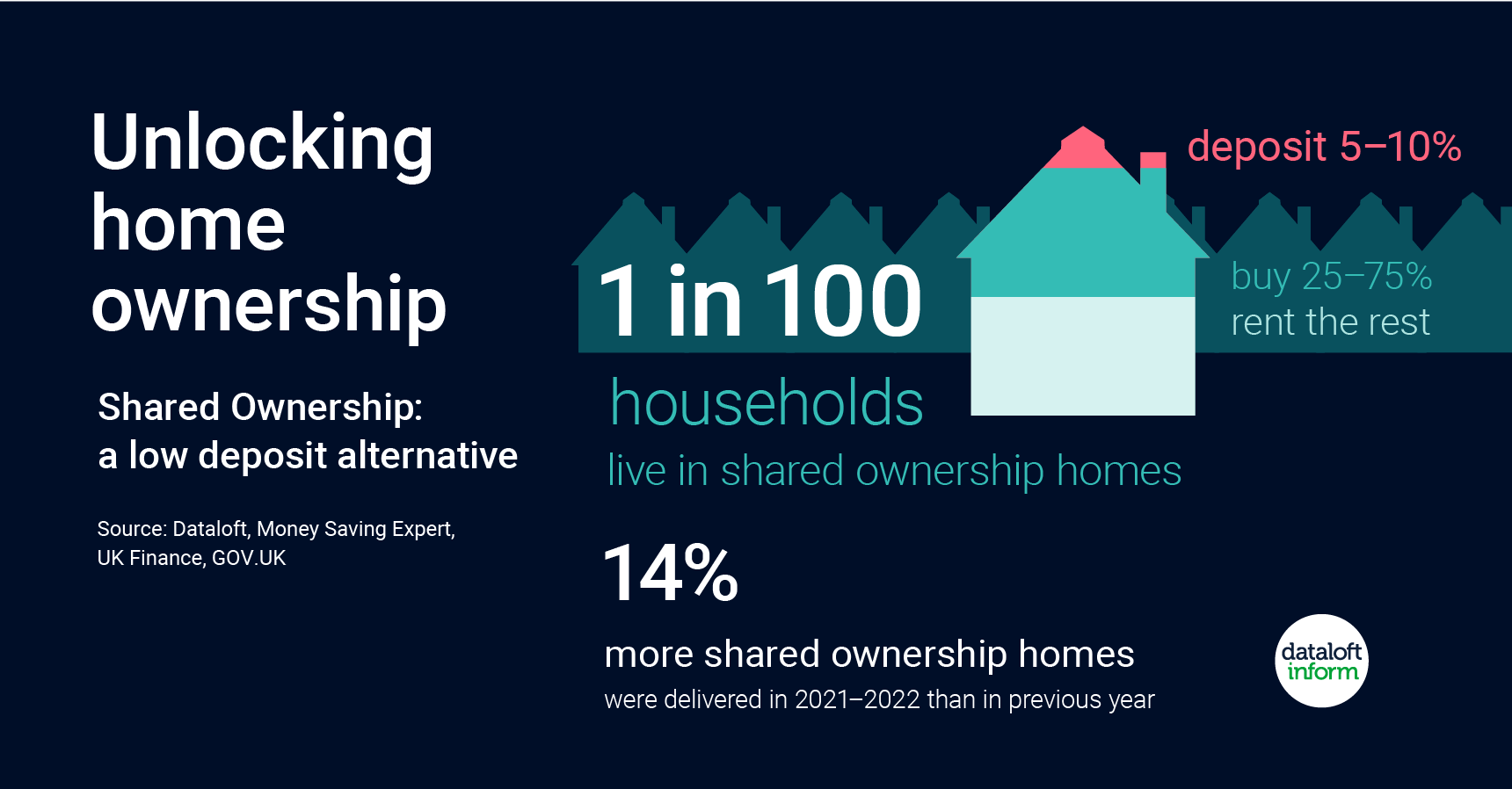
As the curtains draw on the Help to Buy scheme, the landscape of homeownership in the United Kingdom has undergone a noticeable shift. The need for a low-deposit solution to facilitate the dream of owning a home has gained prominence. With approximately 1 in every 100 households in the country residing in shared ownership homes, the concept has emerged as a promising avenue for those seeking to step onto the property ladder with limited upfront costs.
Shared ownership, a novel approach to homeownership, presents an attractive alternative for individuals and families who find themselves grappling with the challenge of gathering a substantial down payment. The scheme's mechanics are simple yet innovative: prospective buyers are offered the opportunity to purchase a share of their chosen property, typically ranging from 25% to 75%, while concurrently paying rent on the remaining portion. Over time, purchasers have the flexibility to gradually acquire additional shares until they eventually gain complete ownership of their home.
A defining feature that sets shared ownership apart from conventional routes is the remarkably reduced deposit requirement. In contrast to the staggering average deposit of 24% typically demanded from UK first-time buyers, shared ownership demands a more manageable deposit, often ranging between 5% and 10% of the share being acquired. This significant reduction in upfront financial burden makes shared ownership a palpable and financially viable option for individuals yearning to attain the status of a homeowner.
It is important to underscore that shared ownership is not an exclusive privilege reserved solely for first-time buyers. The eligibility criteria encompass a broader spectrum, extending the opportunity to those with a household income of £80,000 per annum or less (or £90,000 or less in London), who are unable to afford a residence that aligns with their needs and aspirations. This inclusivity, anchored in financial prudence, underscores the government's commitment to democratizing the experience of homeownership and making it accessible to a wider segment of the population.
Sources of data and expertise, including #Dataloft, Money Saving Expert, UK Finance, and GOV.UK, corroborate the viability and advantages of shared ownership. These reputable sources bolster the notion that shared ownership is not merely a stopgap measure but a bona fide pathway toward establishing a stable and fulfilling homeownership journey.
In conclusion, as the Help to Buy scheme concludes its chapter, shared ownership emerges as a beacon of hope for those seeking a low-deposit route to homeownership. Its dynamic structure, which enables incremental ownership acquisition while reducing the burden of a substantial deposit, positions shared ownership as an accessible and practical solution. By extending eligibility beyond first-time buyers and embracing a wider income bracket, the UK government underscores its commitment to empowering individuals to embrace the joys and responsibilities of homeownership. In the tapestry of UK housing, shared ownership is undoubtedly a thread woven with affordability, flexibility, and opportunity.
- Details
- Hits: 435
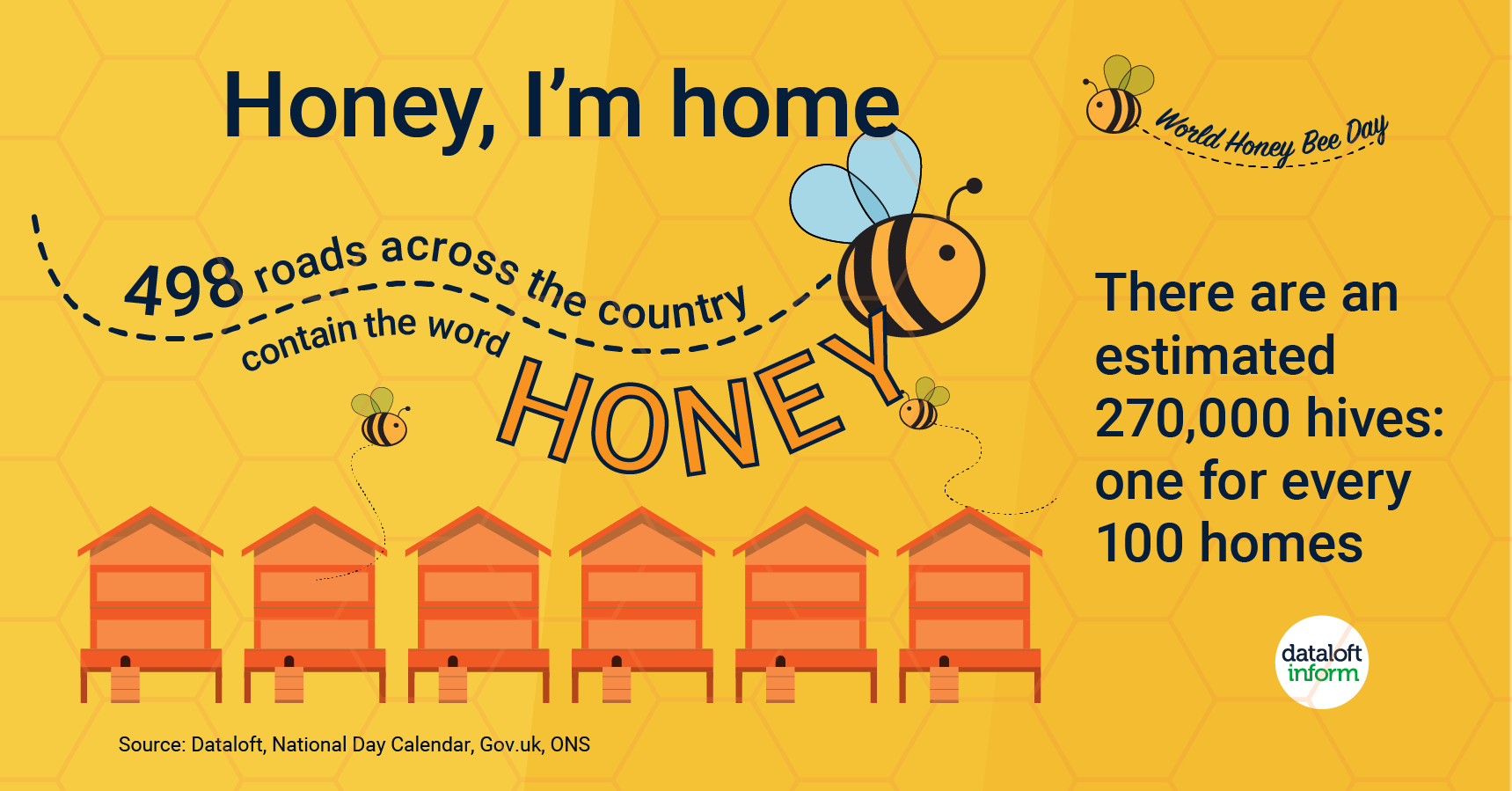
Every year, on the third Saturday of August, a sweet and vibrant celebration takes place around the world. World Honey Bee Day, dedicated to these incredible pollinators, brings together beekeepers, honey enthusiasts, and nature lovers alike. The event shines a spotlight on the importance of honey bees and their role in our ecosystem, while also encouraging actions to protect and support these remarkable creatures.
The Fascination with Bee-Related Addresses
As the world comes alive with the vibrant colours and scents of blooming flowers during the summer months, it's only fitting that many home addresses also feature bee-related names. Across the country, there are a remarkable 498 roads that proudly display the word 'Honey' in their names. These buzzing addresses not only add a touch of whimsy to our maps but also remind us of the intricate relationship between bees, nature, and our communities.
A Decade of Honey Bee Celebration
World Honey Bee Day, which began in 2009, has quickly grown into a global phenomenon. What started as a grassroots initiative has evolved into an annual event that brings awareness to the invaluable role honey bees play in our lives. The day highlights not only the production of delicious honey but also the critical role honey bees play in pollinating the plants that provide the food we rely on.
A Crucial Mission: Protecting Our Pollinators
The significance of honey bees goes beyond the production of a delectable natural sweetener. These industrious insects are vital pollinators, ensuring the reproduction of numerous plant species. According to estimates, over 75% of the world's food crops depend, to some extent, on pollination. In the United Kingdom alone, there are approximately 270,000 hives, equivalent to one hive for every 100 households, underlining the widespread appreciation for these tiny but mighty creatures.
Supporting Honey Bees and Preserving Biodiversity
World Honey Bee Day serves as a reminder that each individual action can collectively make a significant impact. There are several ways that everyone can contribute to the well-being of honey bees and the broader ecosystem:
Planting Pollinator-Friendly Flowers: Honey bees thrive on nectar-rich blooms. By planting flowers like lavender, bluebells, and wildflowers in your garden or community spaces, you can provide essential sustenance for these vital pollinators.
Choosing Locally Sourced Honey: Opting for locally sourced honey not only supports local beekeepers but also encourages sustainable beekeeping practices. Additionally, consuming local honey may have potential health benefits, such as alleviating allergies.
Raising Awareness: Educating others about the importance of honey bees and their impact on food production and biodiversity can create a ripple effect of positive change. Sharing information through social media, community workshops, and school programs can all contribute to a greater understanding of these essential insects.
Reducing Pesticide Use: Chemical pesticides can harm not only pests but also beneficial insects like honey bees. By adopting natural and sustainable pest control methods, we can create a safer environment for all.
World Honey Bee Day is more than just a celebration of honey; it's a celebration of the interconnectedness of all living beings in our ecosystem. From the buzzing streets named after these beloved insects to the efforts to protect and support their populations, this day serves as a reminder of the vital role honey bees play in our lives. By taking small but meaningful actions, we can ensure a brighter and more sustainable future for both honey bees and ourselves.
Sources: #Dataloft, National Day Calendar, Gov.uk, ONS
- Details
- Hits: 468
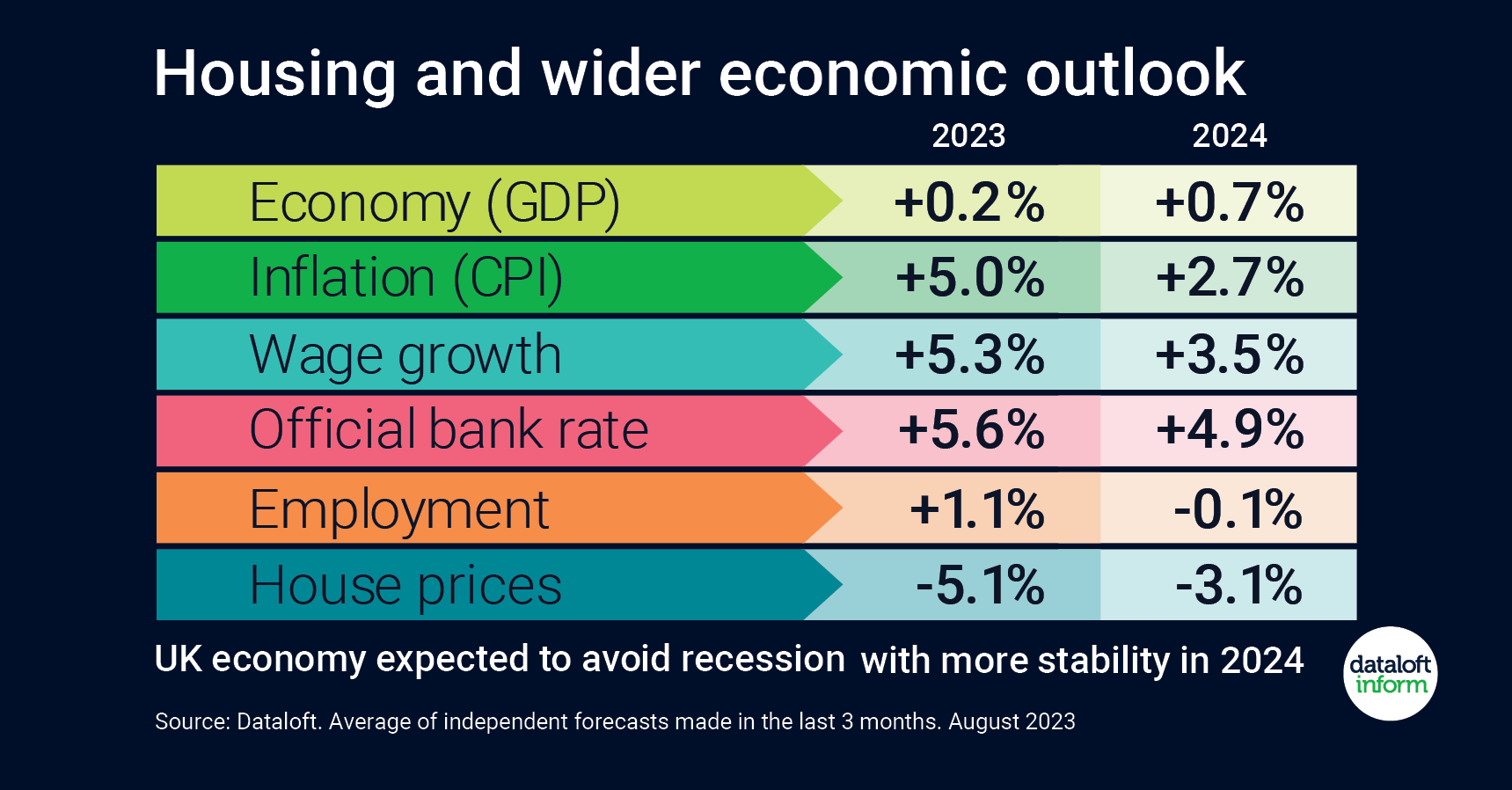
The dynamics of a country's housing market are often viewed as a reflection of its economic health. As the UK grapples with an evolving economic landscape, a close analysis of key economic indicators becomes crucial in gauging the present and future state of the housing market. These indicators offer invaluable insights into the direction of interest rates, inflation, wage growth, employment trends, and broader economic stability. In this context, the UK's housing market stands at a pivotal juncture, shaped by a series of factors that warrant meticulous attention.
Interest Rate Climbs Amidst Inflationary Pressure
With a sequence of 14 consecutive interest rate hikes, the Bank Base rate in the UK has ascended to 5.25% by August. These deliberate rate increases have been instrumental in combating inflation, a persistent concern in recent times. The latest projections from economic experts suggest that the trajectory of interest rates is poised to peak before the close of the year. This upward journey in interest rates has demonstrated its efficacy in reining in inflationary pressures, underlining the central bank's commitment to maintaining economic stability.
Inflation and Wage Growth's Intricate Dance
Amidst this backdrop of interest rate adjustments, the UK's inflation trajectory warrants careful observation. While the target inflation rate stands at 2%, current projections anticipate that inflation will persistently exceed this benchmark. This phenomenon underscores the multifaceted interplay between inflation and wage growth. The latter remains robust, supporting consumer spending and reinforcing the broader economic fabric. As long as wage growth remains elevated and employment figures continue their upward trend, the delicate balance between these factors will significantly influence the housing market's course.
Anticipating Stability and Policy Shifts
As the calendar inches closer to 2024, a sense of stability emerges in the economic outlook. Despite the preceding uncertainties, projections now point towards the UK economy steering clear of a recession. This promising shift bodes well for various sectors, including the housing market. However, on a national scale, expectations point towards a potential decline in house prices. The impending electoral horizon introduces an intriguing variable, as the anticipation of an election tends to galvanize policy shifts. Particularly noteworthy are the projected policy incentives aimed at first-time homebuyers. These incentives could potentially inject new dynamics into the housing market, reshaping demand and supply dynamics.
Sourcing Insights: #Dataloft and Independent Forecasts
The insights discussed here draw heavily from reputable sources, particularly #Dataloft. These insights are distilled from an average of independent forecasts made within the past three months, capturing the zeitgeist of economic sentiment as of August 2023. The reliance on such data-driven insights underscores the importance of staying current with trends and projections to make informed decisions in a dynamic economic environment.
Navigating the Path Forward
In an era marked by economic turbulence and uncertainty, the UK's housing market reflects the intricate dance between economic indicators and policy shifts. The relentless rise in interest rates has successfully tamed inflation, while the delicate interplay between wage growth and employment trends drives consumer spending. As 2024 beckons, a panorama of relative stability emerges, accompanied by a potential correction in house prices. The imminent election introduces a fresh layer of complexity, promising policy incentives that could potentially reshape the housing market's trajectory.
In essence, monitoring the economic indicators is akin to gazing into a crystal ball for the housing market's future. As investors, policymakers, and individuals seeking shelter navigate these dynamic waters, a keen eye on these indicators will be essential in making informed decisions amidst the ebb and flow of the UK's economic landscape.
- Details
- Hits: 455
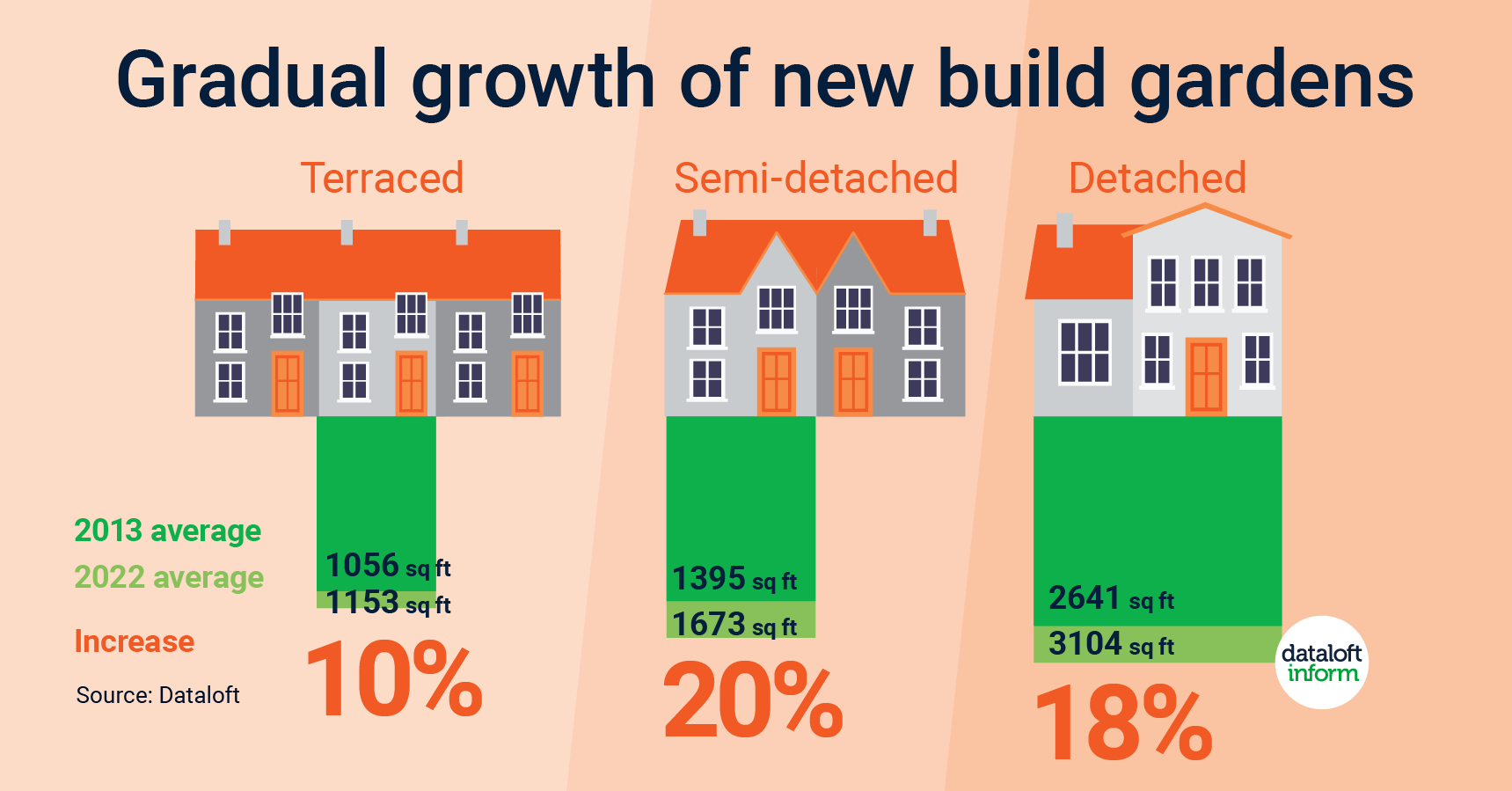
In the wake of the global pandemic, our lives have undergone significant transformations, reshaping the way we work, socialize, and find solace. One of the most profound changes has been a newfound appreciation for gardens and private outdoor spaces. Whether as sanctuaries for relaxation or extensions of our living spaces, gardens have experienced a surge in demand since the pandemic began. Contrary to the popular belief that new build homes come with tiny gardens, evidence indicates that homebuilders have taken heed of this trend and have been increasingly expanding the size of gardens. This article delves into the growing significance of gardens and outdoor spaces, highlighting how they have become a vital component of modern living.
The Growing Importance of Gardens
As people spent more time at home during the pandemic, they turned to their gardens as an escape from the confines of indoor living. The healing power of nature, fresh air, and sunlight became apparent as we sought solace in our outdoor spaces. Gardens offered a respite from the stress and uncertainty of the outside world, providing an opportunity for relaxation, exercise, and mental rejuvenation.
Furthermore, with the advent of remote work and the desire for flexible working environments, gardens became a haven for creativity and productivity. Many individuals transformed their gardens into home offices or creative spaces, blurring the boundaries between indoor and outdoor living. Garden offices provided a tranquil setting for work, free from distractions and offering a healthier work-life balance.
The Rise of Larger Gardens in New Build Homes
Traditionally, new build homes were associated with small gardens due to space constraints and the need to accommodate higher housing densities. However, the demand for larger outdoor spaces has led to a shift in this trend. Since 2020, homebuilders have acknowledged the changing needs of homeowners and have been gradually expanding the size of gardens in new build properties.
According to recent data from #Dataloft 2023, gardens of new build detached homes are now 18% larger compared to ten years ago. Semi-detached homes have seen a 20% increase in garden size, while terraced houses boast gardens that are 10% larger. This change reflects a conscious effort by developers to align their offerings with the shifting preferences of potential buyers.
Embracing Garden Rooms and Outdoor Living
As the demand for private outdoor spaces has soared, so too has the interest in garden rooms and outdoor entertaining areas. People are now looking to optimize their gardens for both relaxation and social gatherings, seeking to extend their living spaces beyond the confines of their homes.
The number of Google searches for 'garden rooms' has risen by an impressive 27% since 2019, indicating a growing desire to create dedicated spaces for various activities in the garden. These garden rooms can serve as home offices, art studios, yoga spaces, or even just a cozy retreat to read and unwind.
Moreover, the surge in Google searches for 'house for sale garden' by 47% highlights the increasing preference for properties that offer ample outdoor space. Homebuyers are actively seeking homes with larger gardens to cater to their evolving lifestyles and enjoy the many benefits that come with private outdoor areas.
The pandemic has brought about a profound transformation in the way we perceive and utilize our homes and outdoor spaces. Gardens and private outdoor areas have emerged as essential components of modern living, providing refuge, relaxation, and an extension of our homes. Homebuilders have been quick to respond to the changing zeitgeist, expanding the size of gardens in new build properties to cater to the growing demand.
As we continue to embrace the value of nature and the importance of spending time outdoors, gardens will remain a focal point in our residential preferences. The increased interest in garden rooms and outdoor living spaces indicates a desire to integrate nature seamlessly into our everyday lives.
In this post-pandemic era, the importance of gardens as personal sanctuaries and versatile extensions of our homes cannot be understated. As society evolves, so too will the way we interact with our living spaces, making gardens an integral part of the contemporary living experience.
- Details
- Hits: 526









